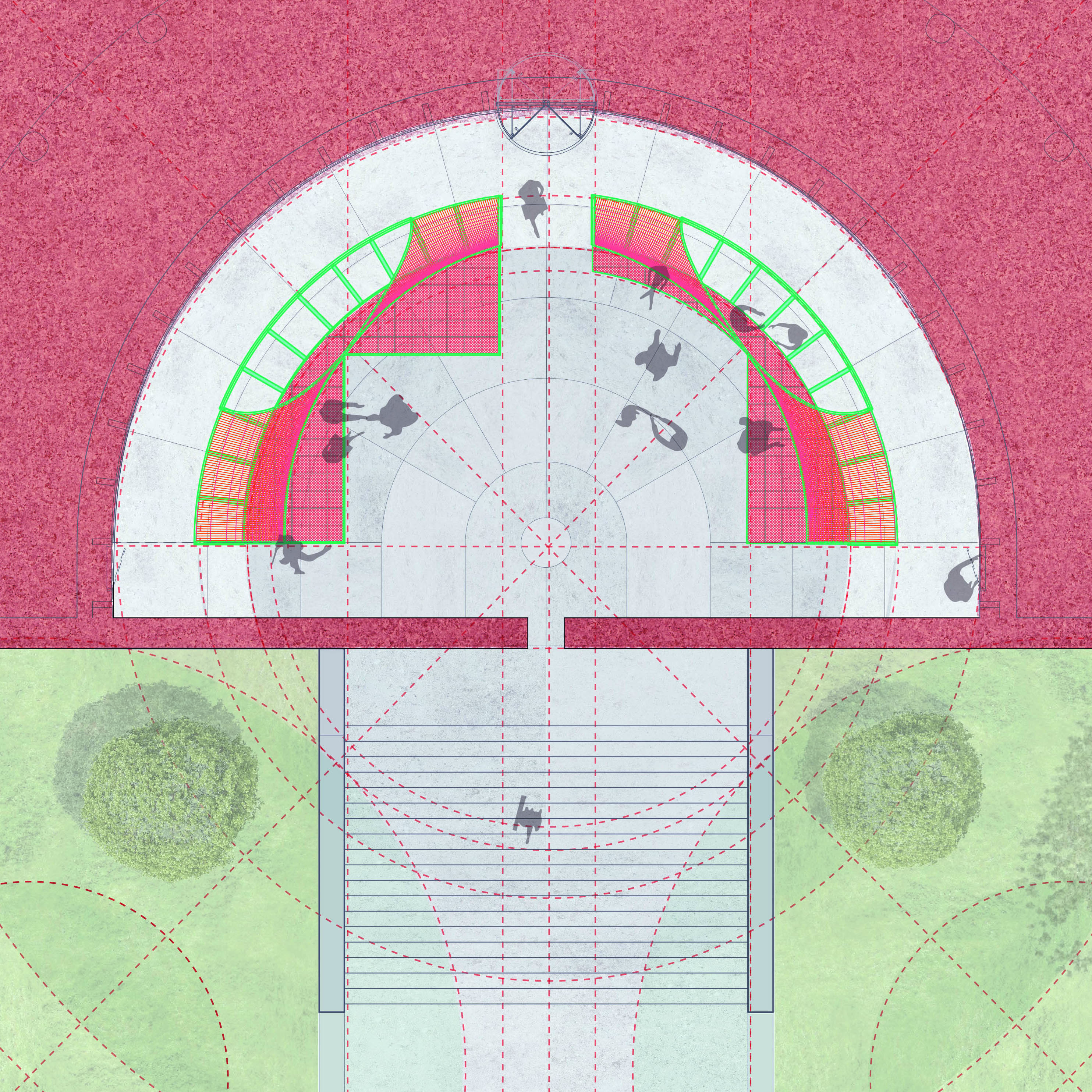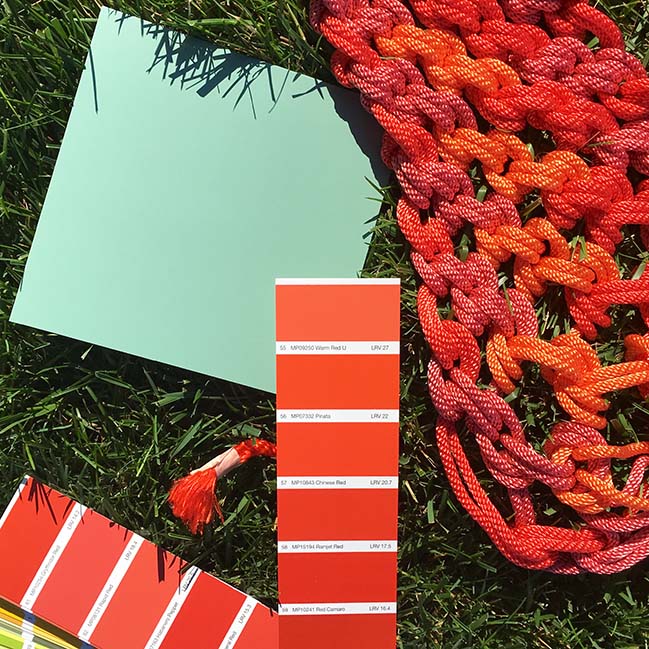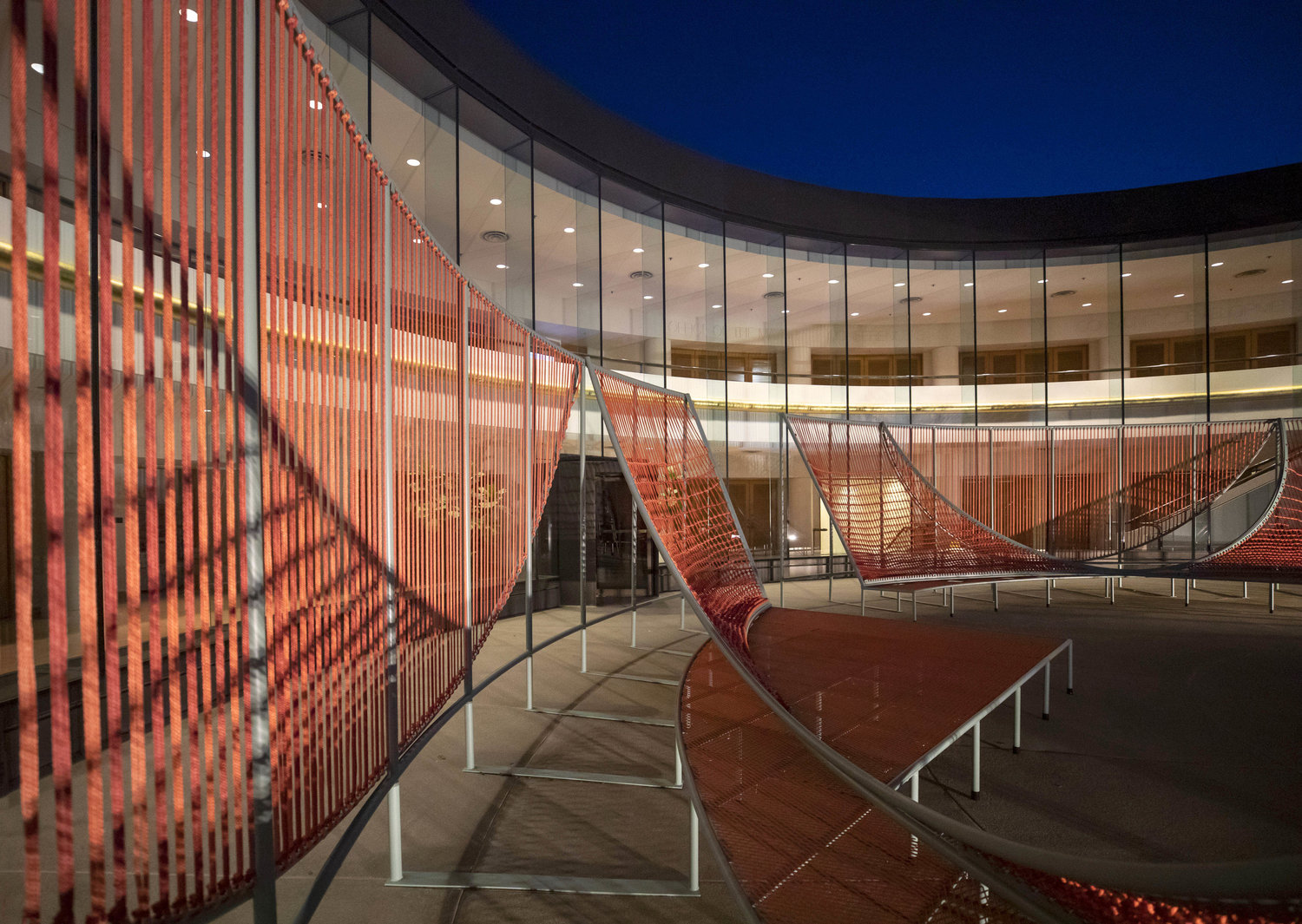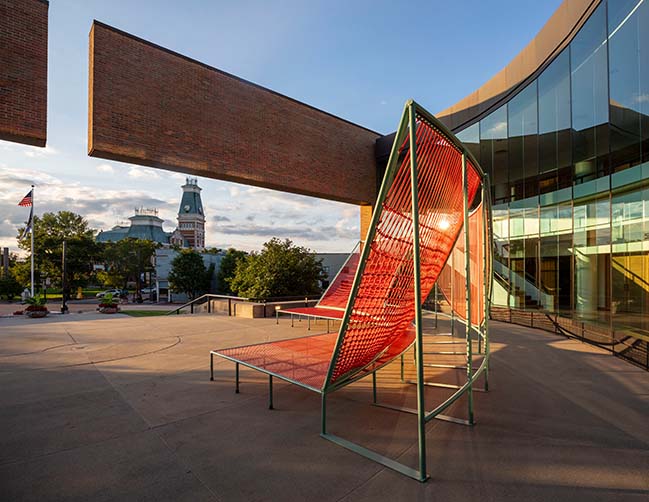Architizer's new image-heavy daily newsletter, The Plug, is easy on the eyes, giving readers a quick jolt of inspiration to supercharge their days. Plug in to the latest design discussions by subscribing.
Sometimes great design requires a soft touch. No stranger to coloring outside the lines, Bryony Roberts is known for creating elegant work that respects craft while embodying a sense of joy. The studio’s latest project is no exception.
Soft Civic was designed as a response to the iconic architecture of City Hall in Columbus, Indiana. Partnering with Brooklyn-based textile workshop Powerhouse Arts and steel fabricators Ignition Arts, the team created a project that reimagines the building’s role as the center of civic leadership in the community.


As one of five Miller Prize installations, Soft Civic was made as custom-fabricated structures with colorful woven surfaces to activate public spaces around City Hall’s main entrance as destinations for play, performance, and participation. Bryony Roberts worked with Sadie Dempsey and Michael Hoehn to create the project and address the monumental architecture of City Hall.
Their approach was to turn the building’s geometry into soft, pliable structures. Enhancing the existing activity at City Hall, the new structures were made to host a series of community-driven events on the themes of democracy and leadership.




The City Hall building was designed by Edward Charles Bassett of SOM in 1981. The project combines the geometry of circles and triangles along a monumental stair, and the structure is known for its cantilevered steel entrance encased in brick. Soft Civic was made to echo and break open the geometry of the building to find other circles and lines through seating structures and platforms.
As the team explains, the softness of the project refers to the function of the space and its material quality. The project was realized through a collaboration that brought together the art and craft of Powerhouse with the precision and fabrication skills of Ignition Arts.
Soft Civic was built out of woven panels and steel frames to explore the softness of textiles at a monumental scale. Made through macramé knotting of nylon rope, the woven panels bring the textures of domestic space into the public sphere, encouraging playfulness and interaction at a site of governance.
The red-orange color of the rope riffs on the brick of City Hall, transforming the colors of the building into a textile landscape. Created in collaboration with a textile workshop in Brooklyn, the knots of the weaving represent a communal effort and echo the project programming around collective participation.



The process of bringing the nylon rope and steel framework together reflected a desire to create a project that spoke to a communal craft, more human-scale, and haptic experiences. The custom-fabricated elements and woven surfaces reinterpret the landmark’s monumental geometry while amplifying the textures of the interior.
A series of curved seating structures and platforms were created that quite literally “soften” the boundaries between architecture, interiors, landscape and furniture. Soft Civic is made to hose a range of programming, from seating for performances and political meetings to events created in partnership with community organizations.
Architizer's new image-heavy daily newsletter, The Plug, is easy on the eyes, giving readers a quick jolt of inspiration to supercharge their days. Plug in to the latest design discussions by subscribing.








